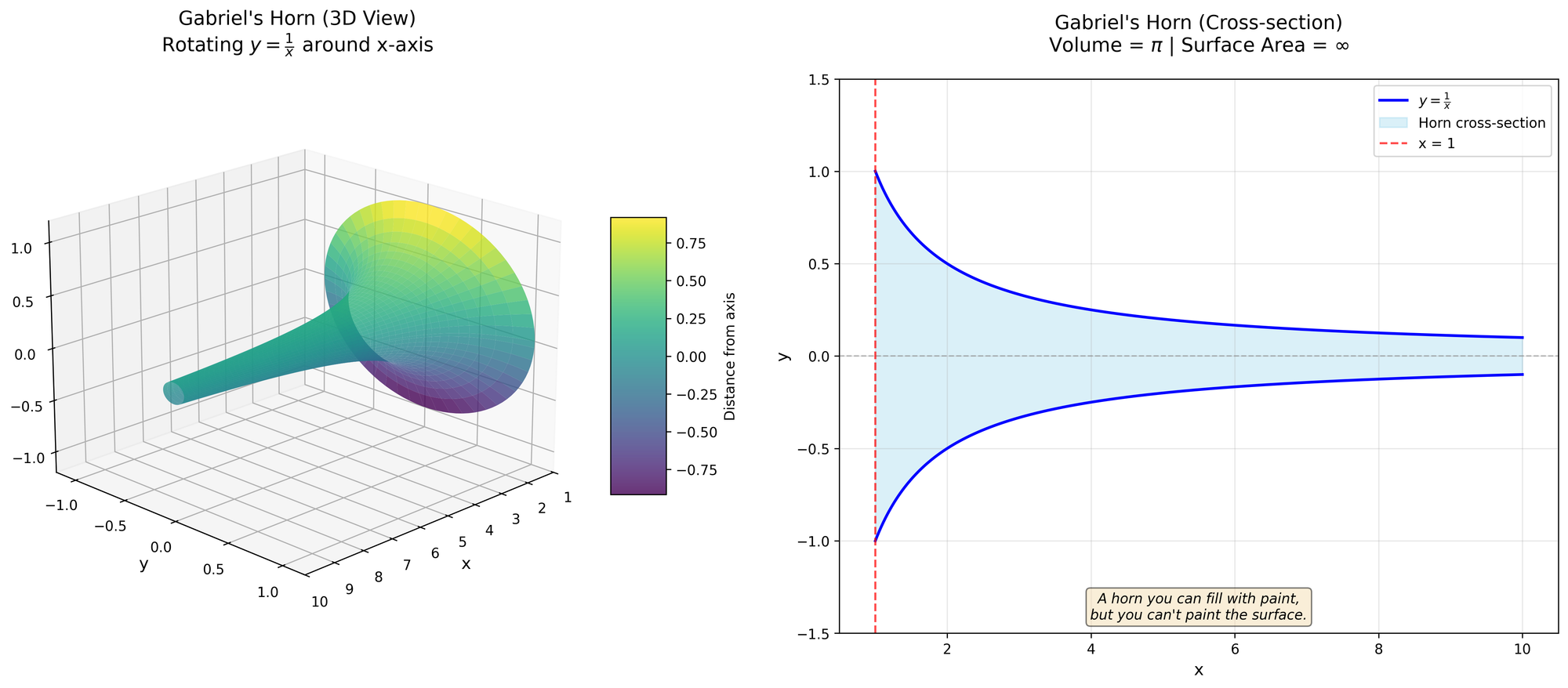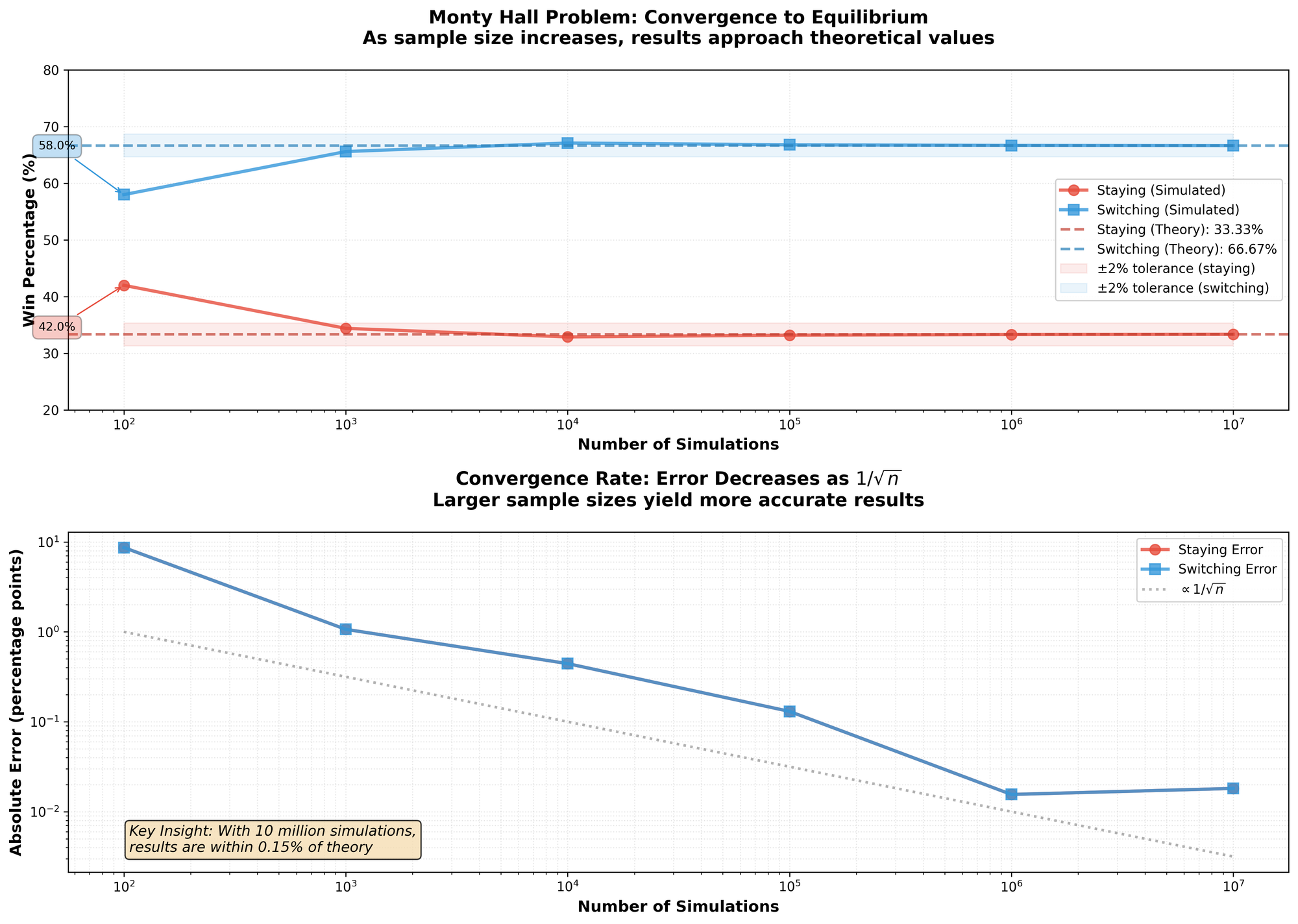After using a fairly large, mature language for a reasonable period of time, finding peculiarities in the language or its libraries is guaranteed to happen. However, given its history, I have to say C++ definitely allows for some of the strangest peculiarities in its syntax. Below I list three that are my favorite.
Ternaries Returning lvalues
You might be familiar with ternaries as condition ? do something : do something else, and they become quite useful in comparison to the standard if-else. However, if you've dealt with ternaries a lot, you might have noticed that ternaries also return lvalues/rvalues. Now, as the name suggests, you can assign to lvalues (lvalues are often referred to as locator values). So something like this is possible:
std::string x = "foo", y = "bar";
std::cout << "Before Ternary! ";
// prints x: foo, y: bar
std::cout << "x: " << x << ", y: " << y << "\n";
// Use the lvalue from ternary for assignment
(1 == 1 ? x : y) = "I changed";
(1 != 1 ? x : y) = "I also changed";
std::cout << "After Ternary! ";
// prints x: I changed, y: I also changed
std::cout << "x: " << x << ", y: " << y << "\n";
Although it makes sense, it’s really daunting; I can attest to never seeing it in the wild.
Commutative Bracket Operator
An interesting fact about the C++ bracket operator: it's simply pointer arithmetic. Writing array[42] is actually the same as writing *(array + 42), and thinking in terms of x86/64 assembly, this makes sense! It's simply an indexed addressing mode, a base (the beginning location of array) followed by an offset (42). If this doesn't make sense, that's okay. We'll discuss the implications without any need for assembly programming.
So we can do something like *(array + 42), which is interesting, but we can do better. We know addition to be commutative, so wouldn't saying *(42 + array) be the same? Indeed it is, and by transitivity, array[42] is exactly the same as 42[array]. The following is a more concrete example.
std::string array[50];
42[array] = "answer";
// prints 42 is the answer
std::cout << "42 is the " << array[42] << ".";
Zero Width Space Identifiers
This one has the least to say, and could cause the most damage. The C++ standard allows for hidden white space in identifiers (i.e. variable names, method/property names, class names, etc.). So this makes the following possible.
int number = 1;
int number = 2;
int number = 3;
std::cout << number << std::endl; // prints 1
std::cout << number << std::endl; // prints 2
std::cout << number << std::endl; // prints 3
Using \u as a proxy for a hidden whitespace character, the above code can be rewritten as:
int n\uumber = 1;
int nu\umber = 2;
int num\uber = 3;
std::cout << n\uumber << std::endl; // prints 1
std::cout << nu\umber << std::endl; // prints 2
std::cout << num\uber << std::endl; // prints 3
So if you’re feeling like watching the world burn, this would be the way to go.
One of the most frustrating things to deal with is the trailing space. Trailing spaces are such a pain because
- They can screw up string literals
- They can break expectations in a text editor (i.e. jumping to a new line or the end of the line)
- They can actually break programming languages
- They are just unflattering
However, in Vim, it takes one autocmd to alleviate this.
augroup spaces
autocmd!
autocmd BufWritePre \* %s/s+$//e
augroup END
On every buffer save substitute spaces at the end of the line with nothing. Easy!
Mercedes-Benz NTG5 STAR2
Fully integrated high-end multimedia system with 6-disc DVD changer, hard-drive navigation system, internet browser, telephony plus DVD video and Music Register, shown on high-resolution 21.3 cm colour TFT display.

The NTG Star2 is a mid-2010s Mercedes-Benz in‑car navigation/infotainment system (part of the COMAND/Audio20 series). In practice it was the NTG5‑generation system used in models like the W205 C‑Class, W222 S‑Class, GLC, etc. For audio and navigation it typically used the standard 7″ (17.8 cm) TFT display and console controller. Importantly, NTG Star2 used Garmin’s “Map Pilot” technology for GPS navigation in Audio20-equipped cars – inserting a Garmin SD‑card lets the Audio20 unit run 3D maps and routing. (The COMAND head unit itself was Mercedes-made, but Garmin supplied the map/database software.)
NTG Star2 debuted around 2014–2015 as the successor to the NTG4.5 COMAND system. Mercedes introduced it on new models (for example, the 2015–2020 C‑Class W205 and later E‑Class and GLC) as COMAND Online (NTG5) hardware. These NTG5/Star2 units featured a built‑in hard drive for media and optional CD/DVD storage. Around 2018–2019 Mercedes began updating Star2 to a new software version called “Star1” (this was essentially a software revision to enable features like Apple CarPlay). As one forum noted, “my new [head unit] is called NTG Star1 and CarPlay works – the old one was NTG Star2”. (In other words, Star2 was the original NTG5 software on older Audio20 hardware; Star1 was the newer update with smartphone integration.)
Today NTG Star2 systems remain supported through Mercedes accessories and parts. Mercedes still sells Garmin Map Pilot SD navigation cards and software updates for NTG5/Star2 systems. For vehicles that came with NTG Star2, a dealer or owner can purchase official updates (e.g. Europe 2020/2021 map packs) for the Garmin Map Pilot. Mercedes also offered an accessory COMAND Online head unit upgrade with DVD changer – a high-end multimedia unit with a 6‑disc changer and hard‑drive nav that replaces the original unit. In short, the NTG Star2 system remains available on its original models (C‑Class, S‑Class, etc.) and can be serviced or upgraded using genuine Mercedes parts (for example, the COMAND Online unit with DVD changer or Garmin Map Pilot module).
While Mercedes-Benz designed the NTG Star2 hardware and user interface, Garmin’s involvement was confined to the navigation content. On Audio20/NTG5 Star2 cars, Garmin supplied the Map Pilot navigation module (SD card and software) that plugs into the Mercedes system. There is no ongoing Garmin development of NTG Star2 itself – Garmin’s input was the map database and guidance engine. All system updates (DVD/DVD changer upgrades or map updates) are handled through Mercedes-Benz parts (including Garmin-branded map cards sold by Mercedes).
Since reading about its faults in The Not So Short Introduction to LaTeX (highly recommended read), I've avidly stayed away from eqnarray. However, I don't think the book conveys the ideas as well as it should. Its suggestion was IEEEeqnarray, as opposed to the classically recommended align. This article from the TeX Users Group conveys them more eloquently and provides better alternatives.
The most frustrating thing about compiling LaTeX in a terminal is the wall of text that gets written to stdout. An easy solution would be piping to /dev/null—except then you wouldn't be able to get error messages (even if you only pipe stdout to /dev/null and keep stderr). So, I made a solution that handles compiling by piping error messages to less. The syntax latexerr FILENAME will compile the file. Passing --clean will delete temporary LaTeX files.
#!/bin/bash
# USAGE: ./script FILE --clean --glossary
extensions_to_delete=(\
gz fls fdb_latexmk blg bbl log\
aux out nav toc snm glg glo xdy
)
compile_and_open() {
argument="$1"
auxname="${argument%.tex}.aux"
errors=$(pdflatex -shell-escape \
-interaction=nonstopmode \
-file-line-error "$argument" | \
grep ".*:[0-9]*:.*")
if [[ -n $errors ]]; then
echo "$1 Errors Detected"
echo "$errors" | less
else
open_file $1
echo "$1 Compile Successful"
fi
}
open_file() {
filename=`echo "$1" | cut -d'.' -f1`
open "$filename.pdf"
echo "$filename Opened"
}
# http://tex.stackexchange.com/questions/6845/compile-latex-with-bibtex-and-glossaries
glossary() {
compile $1
makeglossaries $1
compile $1
compile $1
}
clean() {
for file in $(dirname $1)/*; do
filename=$(basename "$file")
extension="${filename##*.}"
filename="${filename%.*}"
for bad_extensions in "${extensions_to_delete[@]}" ; do
if [[ $bad_extensions = $extension ]]; then
rm $file
echo "$file Deleted"
fi
done
done
}
main() {
compile_and_open $1
if [ "$3" = "--glossary" ]; then
glossary $1
fi
if [ "$2" = "--clean" ]; then
clean $1
fi
}
main "$@"
Painting Gabriel’s Horn
A horn you can fill with paint, but you can't paint the surface.
Mathematics is full of wonderful things, but nothing strikes me as more wonderful—or more unintuitive—than Gabriel's Horn.
Here's how it works: take the function $y = \frac{1}{x}$ where $x \in \mathbb{R}^+, 1 \leq x \leq \infty$, and rotate it around the $x$ axis. Not too hard to picture—it looks like a horn. But here's where it gets weird.
Let's calculate the volume. Using solids of revolution, we can show:
$$
V = \pi \lim_{t \rightarrow \infty} \int _1 ^t \frac{1}{x^2} dx = \pi \lim _{t \rightarrow \infty} ( 1 - \frac{1}{t} ) = \pi
$$
Simple, elegant. The volume is exactly $\pi$. Now let's check the surface area.
We know the general definition of arc length is $\int _a ^b \sqrt{1 + f'(x)^2}$. Combining this with our solids of revolution gives us:
$$
A = 2\pi \lim _{t \rightarrow \infty} \int _1 ^t \frac{1}{x} \sqrt{1 + \left( -\frac{1}{x^2} \right)^2 } dx
$$
This integral isn't trivial, but there's a trick. Take the simpler integral $$2\pi \lim _{t \rightarrow \infty} \int _1 ^t \frac{dx}{x}$$ instead. This will always be less than or equal to our original integral (we dropped the $\sqrt{1 + (-\frac{1}{x2})2}$ term, which is always ≥ 1). Evaluating this simpler integral:
$$
A \geq 2\pi \lim _{t \rightarrow \infty} \int _1 ^t \frac{dx}{x} \implies A \geq \lim _{t \rightarrow \infty} 2\pi \ln(t)
$$
Wait. It diverges. The volume is $V = \pi$, but the surface area is $A \geq \infty$. This isn't a mistake—the math checks out. And that's simply wonderful.

A horn you can fill with paint, but you can't paint the surface.
The Monty Hall Problem
You've seen it in movies or read about it in books: the Monty Hall Problem. Here's how it works: you're on a game show. There are three doors—behind one is a prize, behind the other two is nothing but disappointment. You pick a door. The host, Monty Hall, opens one of the other doors and reveals there's no prize behind it. Keeping the other two doors closed, he asks if you'd like to switch your choice or stick with your original pick. What should you do? Ben Campbell has a solution.
You mean to tell me that switching mid-game—an offer from the man who set up all the doors and prizes—gives me better odds of winning? How is this possible? Seems a bit counterintuitive. Seems almost wrong. Fortunately, we can test this with a simple program.
import Darwin // for arc4random_uniform
func random(from from: Int, to: Int,
except: Array<Int>? = nil) -> Int {
// Produce bounds, +1 to make inclusive
let number = Int(arc4random_uniform(UInt32(to - from + 1))) + from
if except != nil && except?.indexOf(number) != nil {
// Recursively call until we find a valid number
return random(from: from, to: to, except: except)
}
return number
}
// Returns if you won when you stayed and switched, respectively
func montyHall(doors: Int) -> (Bool, Bool) {
let originalDoor = random(from: 1, to: doors)
let correctDoor = random(from: 1, to: doors)
// The door the host reveals
let revealedDoor = random(from: 1, to: doors,
except: [correctDoor, originalDoor])
// If you switched, this would be your new door
let switchedDoor = random(from: 1, to: doors,
except: [revealedDoor, originalDoor])
return (originalDoor == correctDoor, switchedDoor == correctDoor)
}
let testValues = [100, 1_000, 10_000, 100_000,
1_000_000, 10_000_000]
let actualNumberOfDoors = 3
for value in testValues {
var stayingCounter = 0, switchingCounter = 0
for _ in 0...value {
let (stayedWon, switchedWon) = montyHall(actualNumberOfDoors)
if stayedWon { stayingCounter += 1 }
if switchedWon { switchingCounter += 1 }
}
let output = "Test Case: \(value). " +
"Staying Won: \(stayingCounter), " +
"Switching Won: \(switchingCounter)"
print(output)
}
There's no tricks in the code. No gimmicks. So, the results?
| Input | Staying Won | Switching Won |
|---|---|---|
| 100 | 42 | 58 |
| 1000 | 344 | 656 |
| 10000 | 3289 | 6711 |
| 100000 | 33203 | 66797 |
| 1000000 | 333178 | 666822 |
| 10000000 | 3335146 | 6664854 |
It appears that Ben[1] was right. Taking the limit as the input gets higher, switching won roughly $66%$ of the time—compare that to the original $33%$ you got before you were given the option to switch doors. So, how is this possible? I'll explain.

For simplicity, suppose the prize is behind door A out of doors A, B, C. The argument can be made for any initial door, but A makes it easier. At this point, you have a $\frac{1}{3}$ chance of picking the prize no matter what you pick. If you pick door A, the door which contains the prize, the host will definitely want you to change so he will offer you either door B or C. Now suppose you choose a door without the prize, either door B or C. The host has no choice but to eliminate the door without the prize. Meaning if you switch, you have the winning door.
So, why $66%$? Computationally, if you always switch and you picked the wrong door initially, your switch will win every time. There are two incorrect choices out of three, meaning $\frac{2}{3}$ of the time you will win.
You've just had your first lesson in conditional probability.
- 21 main character, played by Jim Sturgess ↩︎

